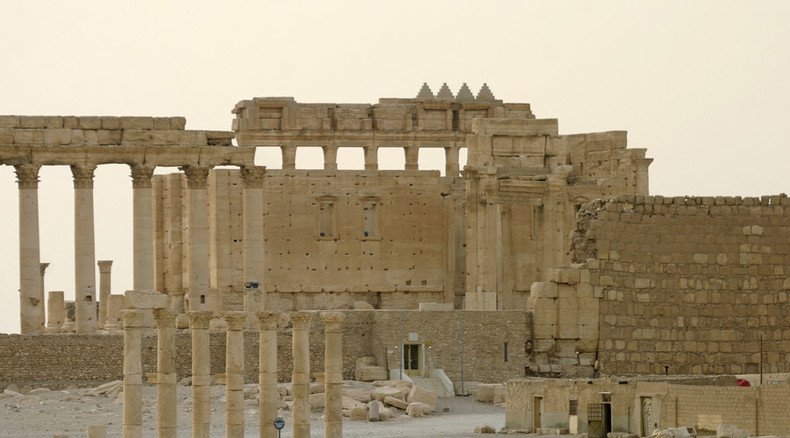ISIS obliterates ancient tombs in Palmyra

Three ancient funeral towers as well as at least seven tombs at the UNESCO heritage site in Syria’s Palmyra have been destroyed by Islamic State militants, who recently stepped up their efforts to eliminate what they consider “pagan symbols.”
“We received reports 10 days ago but we’ve just confirmed the news,” Syria's Antiquities director Maamun Abdulkarim told AFP. “We obtained satellite images from the US-based Syrian Heritage Initiative, taken on September 2.”
Abdulkarim also said sources on the ground confirmed the destruction of the seven tombs a and three towers dating from between 44 and 103 AD. UNESCO described the tower tombs as the “oldest and most distinctive” of the city’s funerary monuments – “tall multi-story sandstone buildings belonging to the richest families.”
#UPDATE IS blows up tower tombs at Syria's Palmyra: antiquities chief http://t.co/NLGY41gKb1pic.twitter.com/7gyu3BavLJ
— Agence France-Presse (@AFP) September 4, 2015Over the past two weeks ISIS stepped up destruction of the ancient city, blowing up part of the Temple of Bel, and the Baal Shamin temple. Last month ISIS also murdered Khaled al-Asaad, the 82-year-old keeper of the historic city of Palmyra.
Palmyra, known as the “pearl of the desert,” before the arrival of Islamic State (IS, formerly ISIS/ISIL) was a well-preserved open-air museum only some 210km (130 miles) away from the Syrian capital Damascus.
READ MORE: ISIS partially destroys 2,000-yo Bel temple in Palmyra, Syria - monitor
According to the Syrian Observatory for Human Rights monitoring group, IS addressed a letter to Palmyra’s residents promising further destruction. “It pledged to demolish and destroy more heritage, saying that ‘everything that is worshiped without God will be destroyed’,” the Observatory said.
Palmyra’s grand amphitheater and the Temple of Nabu are so far reportedly intact, but could become one the jihadists’ next targets. On Monday, Irina Bokova, the UNESCO chief said that Palmyra's destruction is a “new war crime.”
READ MORE: ISIS blows up ancient Baal Shamin temple at Syria’s Palmyra
“ISIS is killing people and destroying sites, but cannot silence history and will ultimately fail to erase this great culture from the memory of the world,” she added.
According to Association for the Protection of Syrian Archaeology, upwards of 900 monuments and archaeological sites have suffered so far in the Syrian conflict.
The destruction of the tower tombs “is an indication of the failure of the international community and global institutions to intervene and solve the situation in Syria,” head of the association, Cheikhmous Ali told AFP.
LISTEN MORE:












